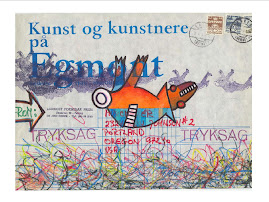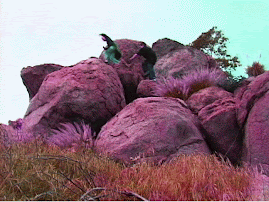Here are some responses from my brilliant Dramatic Lit students. The question posed to them was this. If, as Richard Schechner says, everything can be read as a performance, and if, as the semioticians say, everything can be read as a text, then what constitutes a performance text?
What is a performance text?
The nature of a performance text is as simple as it seems, it is finding an appropriate venue for the sharing of the text that is the challenge. Anything written and extant falls under the umbrella of "performance text." Thanks in a great deal to Dada and surrealist artists, many of the standards a text was held to in order for it to be considered a "performance text" have been shattered. Today’s theater has no way of policing or authorizing what qualifies as a performance text. The concept of formalizing some expression as "Performance Text" would be useless because even a piece everyone may agree upon as a model is, by its nature as a performance piece, an extremely protean entity. No performance of any piece will ever be repeated and every production will be necessarily unique. The words written in a text cannot be interpreted the same way twice and once the play lives for an audience it cannot be compared to the carcass of a text it came from. There is a certain inherent anarchy to any performance, with no way of calculating the final results accurately beforehand despite the exactness a piece may be written with. The script, or roadmap for maneuvering through the journey, must be as flexible and open a medium as possible in order to allow writers to explore and incorporate such extreme possibilities for expression.
--Sam Gromoll
In order for anything to be considered a performance text, it has to be read in such a way to make performance possible. Given the example of an apple, this can be read in many ways. Most people think of an apple as a fruit to eat, or if you are a devious little child a blunt object to throw at a sibling. But, if you take the time to read it as a performance text, you will soon see it soft swooping curves that blossomed out of a flower after it was pollinated by a swarm of bees. It, coming in to its strength and glory of its bright red form only to fall to the earth, wilt, and die. But, hidden in that death, comes the life of a new apple tree and the cycle begins again. This story read solely of the suggestion of "apple" can be portrayed to an audience. It is a rather extreme example of performance text, but it is none the less as valid as other more common place forms.
Poetry is considered to be literature from most people and not even dramatic literature at that. However, I argue that a poem can be a performance text if its words and mean are read and acted out by a person. For instance, Ntozake Shange’s for colored girls who have considered suicide/ when the rainbow is enuf is a poem that was published for performance. I further argue that if a text is read for its story and not with the intent of being performed, it is not a performance text. This is true even if the text in question happens to fall into the category of dramatic literature. One might read Shakespeare’s Romeo and Juliet for the story. And, even though it would be written in the form of a piece of dramatic literature, it should not, in that case, be considered a performance text. It is not what something is that makes it a performance text, but how it is read. The most mundane object, such as an apple, or even the suggestion of an apple, can be considered to be a performance text.
-- Andrew Brackett
A "performance text" can be spoken, written, read, or simply remembered. It can include dialogue, or it can specify a series of actions to be performed without language. It has become more common for larger groups to collaborate on the development of a text intended for performance. Some published texts serve as documentation of performances that were "unwritten" before they took place. Radical theatre practitioner Augusto Boal often includes in his written works the historical documentation of revealing improvisations that took place during his workshops with low-income Brazilian youth and adults.
Performances can also draw from texts that were not specifically intended for theatrical use. Augusto Boal encouraged the creation of performances based on newspaper articles, with the play action exposing and criticizing the hypocrisies of both the media and its subjects. Performances can animate historical events, utilizing the exact words of people known or "unknown" to mainstream history. Performances are able to creatively transform even texts that are not considered "true literature" by most. Shopping lists, for instance, could be compiled and developed into a fascinating performance, even though they are not generally considered literary.
The term "dramatic literature" seems to imply only works that have been selected by the mainstream for publication, only works that could be placed on bookstore shelves for upwards of $15.00. The term seems to encompass only texts that maintain literary value outside the world of live performance. They can acceptably be read, without being experienced. They exist distinct and separate from the performances that they map. "Performance text," on the other hand, emphasizes the need for performance, for action, for active engagement with the material, for the human-to-human interactions that make theatre interesting. Unlike "dramatic literature," this term reminds us of the mad stew that simmers under the written word, waiting to boil over, if only we'll let it.
-- Kat Wodtke
A performance text is anything that influences physical expression in front of an audience. That definition may be too simplistic—what is it ruling out and what are the exceptions? . . . . This brings me to consider what constitutes a performance—not just actors or performers on a stage, but, also, the performances and rituals of everyday life. What is the "text" for those performances?
-- Liz O'Connell
Subscribe to:
Post Comments (Atom)








No comments:
Post a Comment